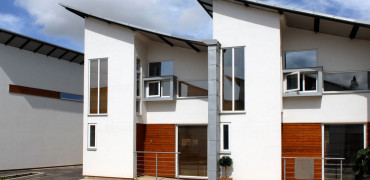The fallout from Covid for the construction industry, which has weathered the storm in several ways so far, could be about to become very challenging when it comes to materials.
And for the housebuilding sector in particular, a ‘perfect storm’ is brewing, if not already raging in some areas, in terms of timber sourcing.
Sitting at the eye of the storm currently is the humble timber roofing batten, with many going into the average standard UK pitched-roof house.
The availability of the product is at the centre of a lot of consternation among the roofing industry (manufacturers and contractors), who have come together to raise the alarm.
The supply chain is effectively in a war to try and deliver what’s needed
Grave concerns
The National Federation of Roofing Contractors has joined up with leading suppliers Avonside Group, Marley and SR Timber in a campaign to persuade housebuilders to take a collaborative approach to coping with the problems.
They say they have “grave concerns” that with “extremely low available stocks of European softwood” (which is used for UK roofing battens), coupled with spiralling demand from housebuilders post-pandemic, the supply chain is effectively in a war to try and deliver what’s needed.
The free market being what it is, already increasing prices of this basic raw material are now seeing “steep and rapid cost inflation,” as availability shrinks, meaning roofing contractors will have to start thinking about passing this increase on to their housebuilder customers.
That’s not going to do anything to help housebuilders hit the minimum recommended target of 300,000 homes per year.
Global shortages
The three biggest global timber markets (China, the US and Russia) are not helping, thanks to their own challenges.
China has been coping with flooding and stricter forest protection measures, and has itself been importing from Europe, eating into the UK’s former main source.
Part of the reason for this is Russia’s proposed ban on exports of softwood and hardwood logs, an important source for China.
And the North American industry is still in disarray from the pandemic, with half of Canadian and a third of US sawmills having closed.
This led to a stoppage in exports and was compounded by wildfires and hurricanes.
Local challenges
There is some good international news, such as Sweden maintaining and even increasing production levels, but due to the wide global factors, Europe is now the world’s leading exporter of sawn softwood.
UK house builders may struggle to accept these macro factors when they are dealing with everyday challenges on their doorstep, but they are a small part of a much bigger picture.
Closer to home, the increase in homeowners renovating their own properties during the pandemic has sucked yet more supply from the chain.
Lastly, Covid and Brexit-related logistics issues such as freight delays (alongside transport cost increases), make this one of the most challenging times for timber supply in most people’s memory.
Early warnings
Roofing contractors are struggling, so housebuilders will, meaning delays to build programmes, and resulting cost penalties. The best they can do is to try and work together, along with product suppliers, to at least understand each other’s challenges.
The first step is for suppliers to give early warning about stock issues, and likely impact on lead times and prices, so both sides can plan their schedules.
Some firms, such as SR Timber, are lucky to have their own sawmills, but their trading director Shaun Revill admitted recently that even their “robust” supply chain had been “tested to the limit by Brexit and Covid.”
However, he added that the company has “been very proactive and transparent with customers, and given them lots of information,” including on price movements.”
He offered the caveat that the industry hasn’t seen anything like this since the Second World War.
On the endangered list
Timber battens are the second highest category of materials in the ‘endangered’ list in terms of shortages currently, below roof tiles.
A third of contractors are reporting shortages, and they say it’s their main challenge currently.
The Construction Leadership Council says that things will get worse before they get better. Europe has plentiful forestry, but there will be delays while minimum stocks in sawmills are replenished, as demand continues to increase from across the world.
The costs of the delays may not be sustainable for many housebuilding firms; we can only wait and see.
The only good news is the problem is now being starkly accepted by the industry, with it unlikely to be one that goes away soon.
James Parker is editor of House Builder & Developer



